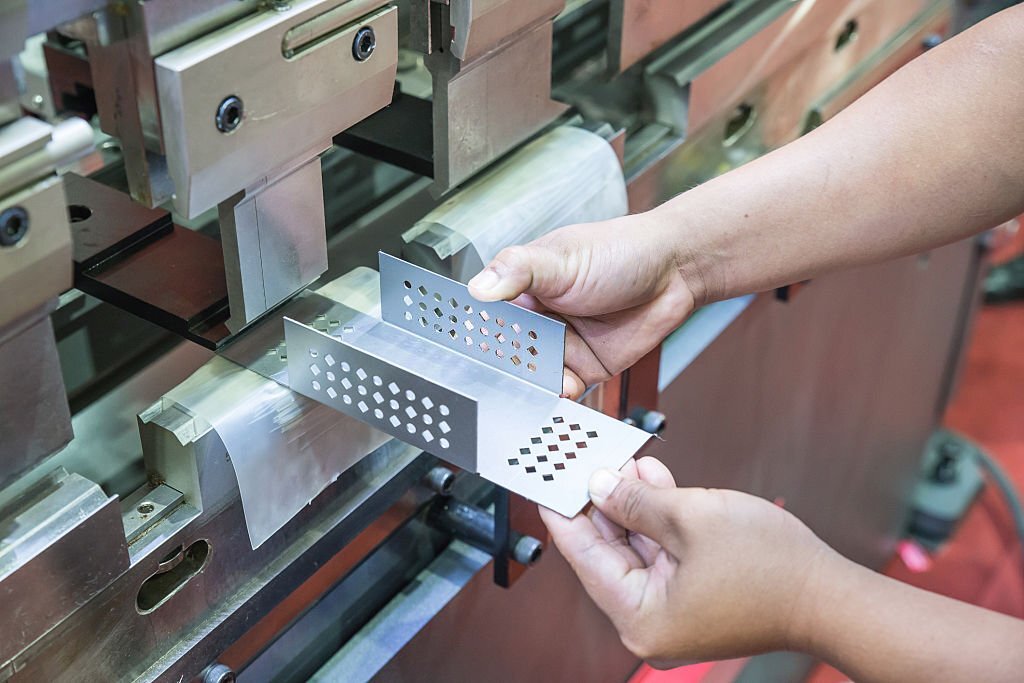Introduction to Metal Stamping
Metal stamping is a manufacturing process used to convert flat metal sheets into specific shapes through techniques like punching, bending, embossing, and coining. Metal stamping parts are widely used in various industries, including automotive, aerospace, electronics, and construction.
Send Enquiry...
Types of Metal Stamping Parts
| Type | Description | Common Applications |
|---|---|---|
| Progressive Die Stamping | Uses multiple stations to shape metal in a continuous process | Automotive, electrical components |
| Deep Drawn Stamping | Forms hollow or cylindrical shapes by stretching the metal | Kitchen sinks, automotive fuel tanks |
| Transfer Die Stamping | Moves the metal part through different stations for complex shaping | Aerospace, medical equipment |
| Fine Blanking | Produces high-precision parts with smooth edges | Gears, lock components |
| Multi-Slide Stamping | Uses multiple slides to bend and shape metal from different angles | Electronics, small machinery parts |
Advantages of Metal Stamping Parts
- Cost-Effective: Mass production reduces manufacturing costs.
- High Precision: Consistent and accurate shapes with tight tolerances.
- Durability: Stamped metal parts are strong and resistant to wear.
- Versatility: Suitable for various metals like steel, aluminum, and copper.
- Scalability: Efficient for both small and large production runs.
- Speed: Faster production compared to other fabrication methods.
Applications of Metal Stamping Parts
- Automotive: Engine components, brackets, and chassis parts.
- Aerospace: Aircraft panels, turbine blades, and landing gear components.
- Electronics: Heat sinks, circuit board connectors, and shielding cases.
- Medical: Surgical instruments, orthopedic implants, and dental braces.
- Construction: Metal roofing, brackets, and framework structures.
Manufacturing Process
- Design & Prototyping: Engineers create CAD designs and prototypes.
- Material Selection: Choosing suitable metal sheets based on application.
- Tool & Die Making: Manufacturing dies to shape metal sheets.
- Stamping Process: Using presses to punch, cut, and shape metal.
- Finishing & Quality Control: Surface treatments, coatings, and inspections.
Choosing the Right Metal Stamping Manufacturer
- Industry Experience: Look for manufacturers with expertise in your sector.
- Production Capabilities: Ensure they offer the required stamping techniques.
- Material Options: Availability of various metal grades and finishes.
- Quality Assurance: Certifications like ISO 9001 and IATF 16949.
- Lead Time & Cost: Competitive pricing with efficient turnaround times.
Verdict
Metal stamping parts are an essential component in modern manufacturing, offering precision, durability, and cost-effectiveness. Choosing the right manufacturer ensures high-quality parts tailored to industry-specific needs. Whether in automotive, aerospace, or electronics, metal stamping provides efficient solutions for large-scale production.
Frequently Asked Questions (FAQ)
Q1: What materials are commonly used in metal stamping?
A: Common materials include stainless steel, aluminum, brass, copper, and carbon steel.
Q2: How does progressive die stamping differ from transfer die stamping?
A: Progressive die stamping moves the metal through multiple stations in a single strip, while transfer die stamping transfers individual parts through different stations.
Q3: Can metal stamping produce complex shapes?
A: Yes, advanced stamping techniques allow for intricate designs and tight tolerances.
Q4: Is metal stamping cost-effective for small production runs?
A: While it is best suited for high-volume production, small runs can be cost-effective with proper tooling.
Q5: What industries benefit the most from metal stamping?
A: Automotive, aerospace, electronics, medical, and construction industries widely use metal stamping for precision components.
